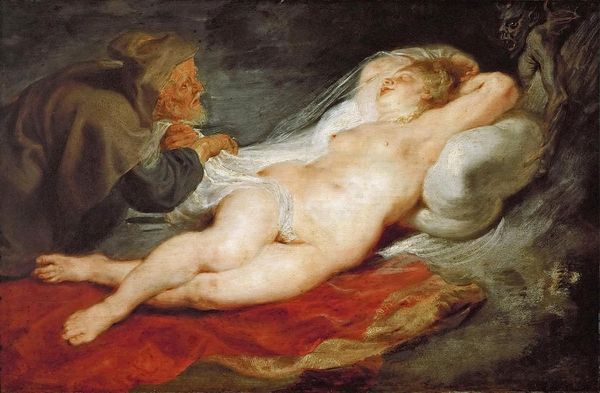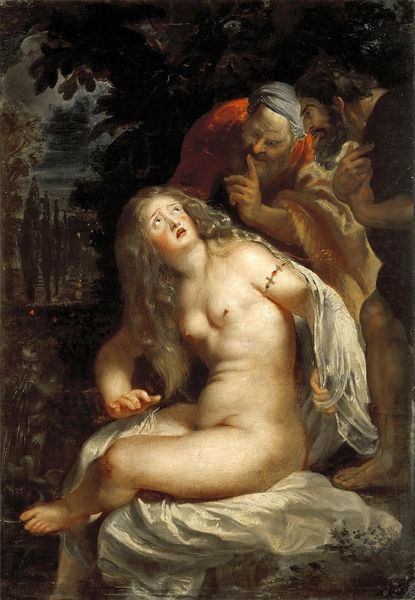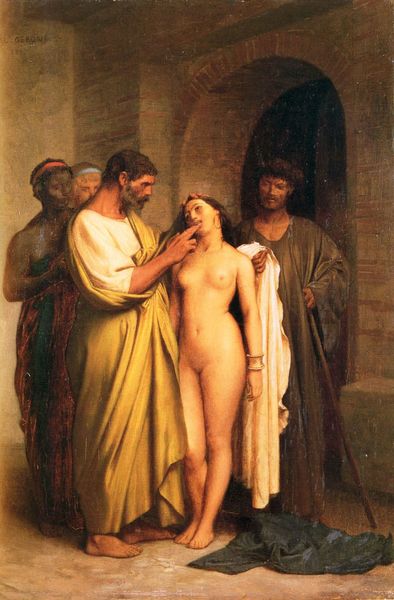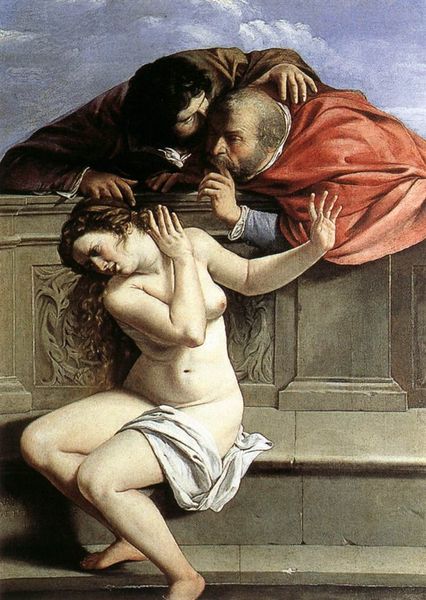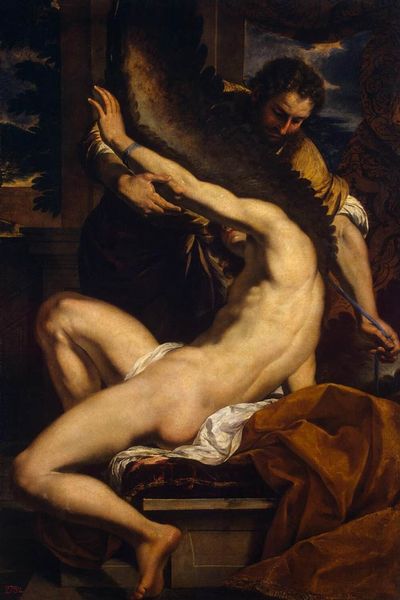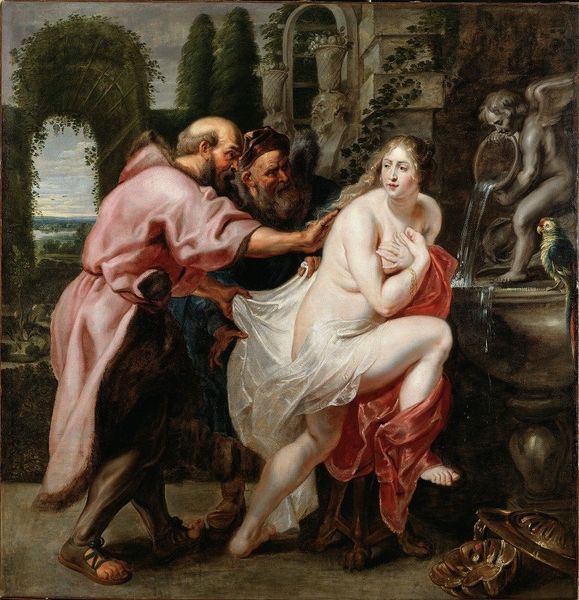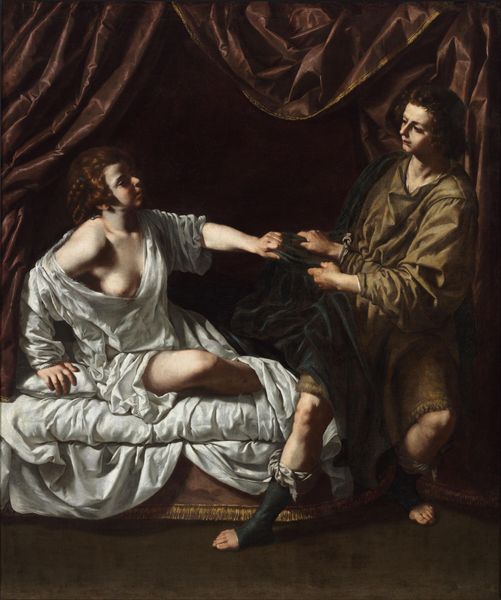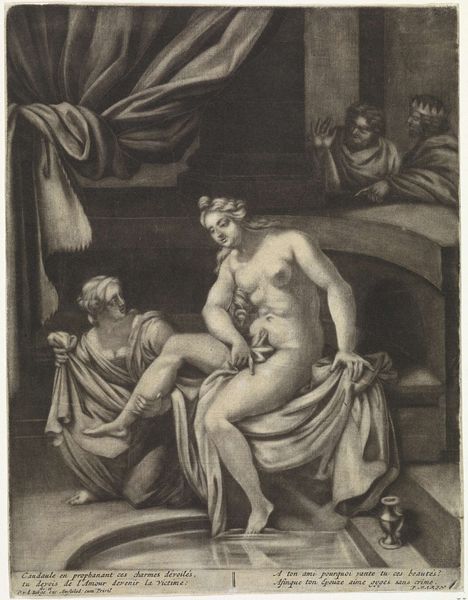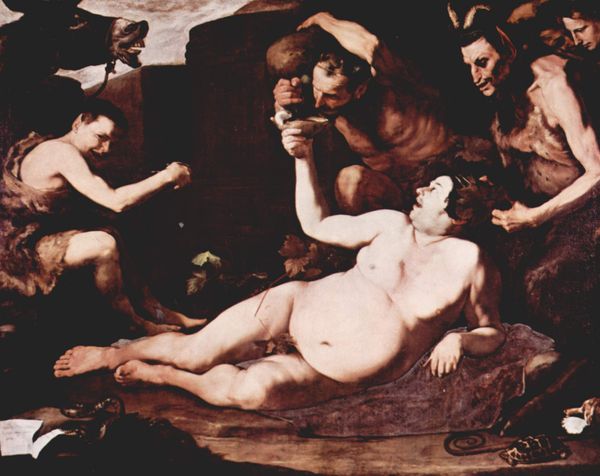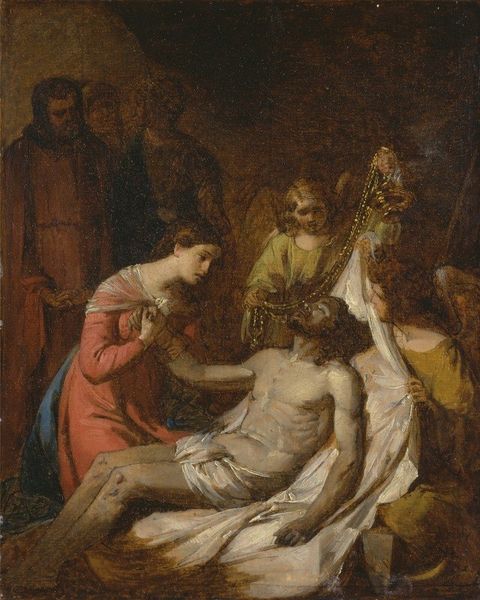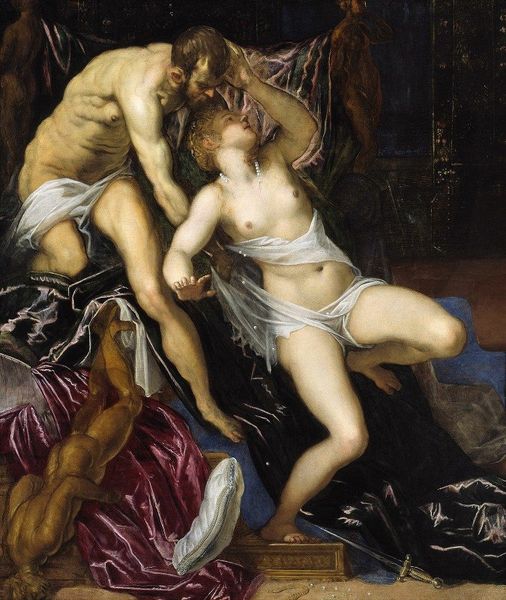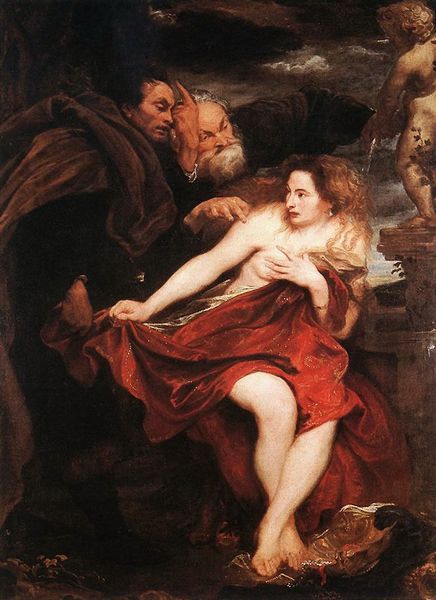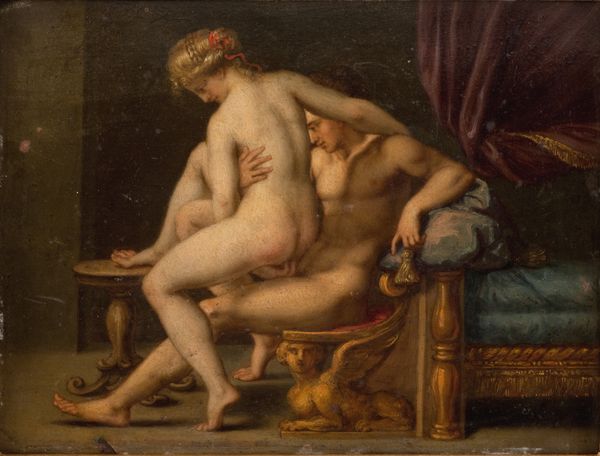
painting, oil-paint
#
portrait
#
self-portrait
#
narrative-art
#
baroque
#
dutch-golden-age
#
painting
#
oil-paint
#
figuration
#
chiaroscuro
#
mythology
#
human
#
genre-painting
#
history-painting
#
facial portrait
#
lady
#
charcoal
#
nude
#
portrait art
Dimensions: 142 x 142 cm
Copyright: Public domain
Curator: Here we have Rembrandt van Rijn's "Bathsheba at Her Bath (Bathsheba Holding King David's Letter)", painted in 1654. It currently resides in the Louvre in Paris. Editor: It strikes me as profoundly somber. The weight of something unspoken hangs in the air, amplified by the stark contrast of light and shadow, almost theatrical. Curator: Exactly! Rembrandt masterfully employs chiaroscuro here, bathing Bathsheba in light while the background remains shrouded in darkness. Considering its socio-political backdrop, it is imperative to analyse how Rembrandt tackles issues surrounding female vulnerability. It forces a dialogue with our understanding of power, both visible and hidden. Editor: And that dialogue, as you frame it, makes it impossible not to consider Bathsheba's perspective in a male-dominated space and how power manifests through the written word and voyeuristic observation. How do societal power structures influence this very personal moment? Curator: Precisely. The letter is the fulcrum of that power dynamic. Bathsheba's pensive expression indicates internal conflict; we might see how Baroque art conventions work to emphasise individual emotion set against social constraints. Editor: Right, and how do public institutions display such an intimate moment. How has the political reception of the artwork shifted with social paradigm changes through the years? And it's essential to remember, a historical reading means reflecting on ourselves as products of our present. Curator: I agree. This reading also brings forward feminist theoretical concerns such as the concept of the gaze. It encourages us to evaluate contemporary discussions about autonomy, representation and historical narratives and its potential relevance. Editor: I now notice how Rembrandt pushes back on established representations of idealised femininity of the female form by depicting Bathsheba in this context. What dialogues do we have today when art makes those statements and why are the answers important? Curator: Examining “Bathsheba” underscores the role of art institutions. These aren't just places to preserve artefacts, but locations of dialogues where the past can be read through a contemporary, intersectional lens. Editor: Reflecting on it, seeing the piece both as a testament to Rembrandt's technique and a case study in the ever shifting dynamics between artwork and audience adds more and different ways for viewers to experience art, each deeply rooted in their own context.
Comments
No comments
Be the first to comment and join the conversation on the ultimate creative platform.
